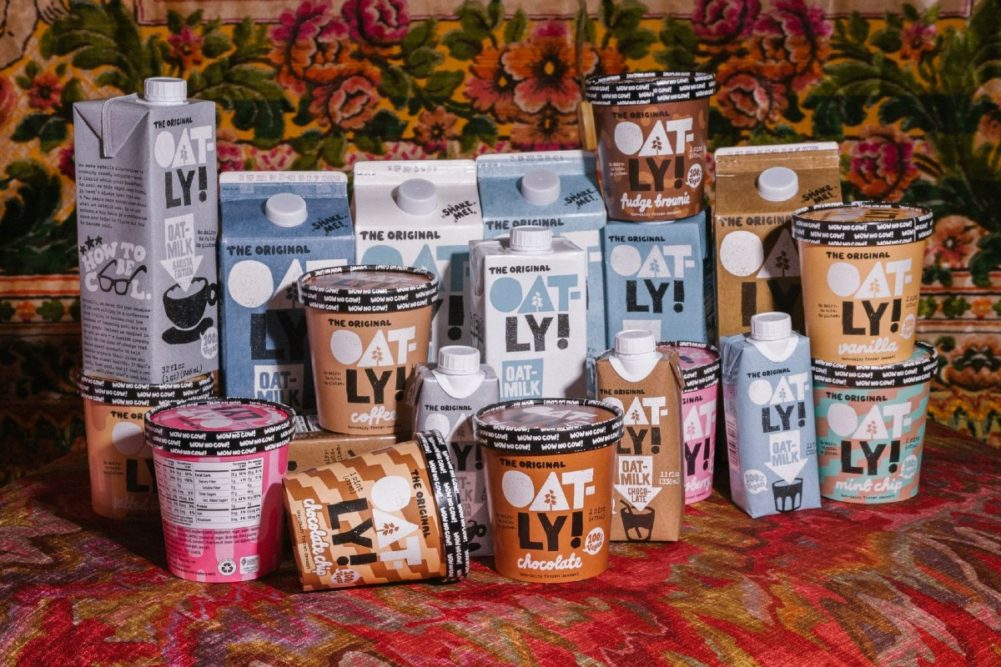MALMO, SWEDEN — Oatly Group AB announced plans to pivot following weak third-quarter results. The company is shifting to a “hybrid” manufacturing model and reducing costs in its Europe, Middle East and Africa (EMEA) region through cost and headcount reductions.
“This reset plan involves two fundamental screens – adjusting our supply chain network strategy and simplifying the organizational structure,” said Toni Petersson, chief executive officer, during a Nov. 14 conference call to discuss third-quarter results.
As part of the supply chain reset, Petersson said Oatly is simplifying its strategy by focusing investment on the company’s oat-based technology and capacity, and is in active discussions with manufacturing partners to establish a hybrid production model.
“This move towards a more hybrid network is expected to significantly reduce our future capital expenditures and have a positive effect on our cash flow outlook,” he said.
The second pillar of the Oatly’s plan will involve an overhead and headcount reduction in the EMEA region impacting up to 25% of the costs. The company did not provide specific details about the reorganization.
“By doing this, we expect annual savings up to $25 million from the reorganization, which should take effect starting in Q1 2023,” Petersson said. “We have identified incremental opportunities in the rest of the organization from which we expect up to $25 million in additional annual savings in the first half of 2023.”
For the quarter ended Sept. 30, Oatly recorded a loss of $108 million, significantly greater than the loss of $41.2 million the company experienced during the third quarter of fiscal 2021.
Quarterly sales rose to $183 million from $171 million the year before.
Items affecting the quarterly results included issues at Oatly’s Ogden, Utah, manufacturing plant that reduced production, COVID-19 restrictions in Asia and $16.6 million in foreign exchange costs.
“Sold volume for the third quarter of 2022 amounted to 126 million liters compared to 110 million liters last year, an increase of 14.5%,” said Christian Hanke, chief financial officer. “We experienced broad-based growth with 7% sales volume growth in EMEA, 17% growth in (the) Americas and 38% volume growth in Asia.”
Securities analysts on the call pressed Petersson about the pivot to the hybrid manufacturing model.
“Fundamentally, we will need more capacity to support growth,” he said. “This gives us flexibility to add capacity faster.”
He added that building a manufacturing plant is a “heavy lift,” and shifting to the hybrid model will allow the company to focus more on innovation, branding and sales.
“Second, the availability of strategic co-packers is easier to find now than before since we have both scale and growth,” Petersson said. “So, meaning that we have more qualified partners to work with in terms of food safety, quality and security of supply.”
Oatly reduced its sales outlook for the rest of the year to sales in a range of $700 million to $720 million, an increase of 9% to 12% over fiscal 2021 sales.
“For fiscal 2022, we are lowering our outlook primarily to reflect COVID-19 pressures negatively impacting sales in Asia, operational challenges in (the) Americas which limits our ability to accelerate sales momentum, and continued foreign exchange headwinds,” Petersson said. “We believe these challenges are transitory and that we have significant opportunities for growth as these headwinds subside. In the meantime, we have taken actions to adjust our supply chain network strategy and simplify our organizational structure for a more balanced growth equation moving forward."
The operational challenges in the Americas related to manufacturing issues at the Ogden plant, which led to a manufacturing line being down for approximately three weeks.
“It has since been resolved or production is stabilizing, so we can start rebuilding inventory, but it did have an impact on Q3 and will also have an impact on the volumes we can sell in the fourth quarter, which is the main driver of our guidance update,” Petersson said.

